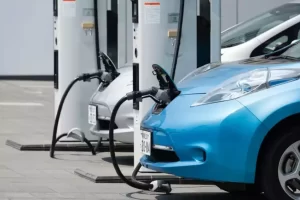Sustainable Fuels: Beyond Gasoline and Electricity

Sustainable fuels such as biofuels, hydrogen and natural gas have an integral part to play in supporting longer journeys. But their production must not compete with food production or cause environmental degradation such as deforestation.
Coal does not meet either of these criteria: it’s finite and releases carbon dioxide emissions.
Biofuels
Biofuels are made from biological sources and emit less greenhouse gas when burned than traditional fossil fuels, being renewable as well. Ethanol was one of the early biofuels, produced from corn and other grains for use in cars or blended into gasoline to lower emissions.
Producing biomass fuels may have significant environmental repercussions. If biofuel crops compete with food for land, this can result in land use changes leading to deforestation and biodiversity loss – this being especially prevalent with first generation biofuels such as ethanol and biodiesel.
Newer biofuel research seeks to mitigate these adverse impacts. For instance, scientists are creating fourth-generation biofuels using algae and other plants to capture CO2 from the atmosphere and convert it directly into sustainable fuel without needing land clearing or traditional farming techniques – these biofuels can help meet regulatory GHG reduction targets for cars, trucks and aircraft if used appropriately – therefore it’s crucial that proper decisions are made when selecting which biofuels to use.
Hydrogen
Hydrogen fuel differs from hydrocarbon fuels by producing only water (H2O) and heat upon combustion, meaning it can serve as an ideal replacement fuel in vehicles and other industrial processes.
City dwellers seeking clean hydrogen fuel can now gain access to affordable and safe hydrogen generated through steam reforming natural gas or from alternative sources – including captured carbon and waste gases from industry – for use as “drop-in” fuel to lower lifecycle CO2 emissions by up to 80%.
Governments at national, regional and city levels require long-term strategies in order to scale up hydrogen, while companies must invest in technology and form networks. International cooperation and harmonized standards regarding equipment safety testing will play a vital role in bringing costs down while increasing performance – essential components in unlocking its market potential and unlocking its versatility as an energy carrier over long distances. It could provide renewables with much-needed buffered availability as it transports energy efficiently over vast distances.
Electricity
Fossil fuel-powered electricity plants are the single greatest contributor to climate change in the United States, so to reduce carbon emissions they must be replaced with cleaner, renewable solutions with zero-emissions outputs.
Liquid transportation fuels produced from biomass and coal using thermochemical conversion can play an integral role in mitigating greenhouse gas emissions; however, to meet regulatory GHG reduction targets they must come from non-biofuel sources as well.
The e-fuel industry is banking on electric vehicle sales to boost demand for their products; however, technology does not yet exist at scale to make e-fuels an effective replacement for gasoline and diesel cars.
Aviation currently uses kerosene fuel, but new sustainable aviation fuels (SAFs) could significantly lower aviation’s net carbon dioxide emissions. SAF development is underway and several airlines have committed to purchasing them in the future. ICAO has also established the 2050 Vision for SAFs which includes an aim of attaining greater than 100% lifecycle GHG emission reduction from SAFs by 2050.
Natural Gas
Natural gas is one of the cleanest-burning fossil fuels, being virtually odorless and colorless as well as composed of simple hydrocarbon molecules. When burned, natural gas releases only carbon dioxide and water vapor as emissions. By contrast, coal and oil release harmful elements like nitrogen oxides and sulfur dioxide when burned.
Scientists are researching ways to use natural gas as fuel for vehicles using fuel cells, an innovative process which converts hydrogen to electrical energy through electrochemical reactions without producing harmful emissions or particles when producing power; plus they require no additional fuel sources for operation.
Sustainable Aviation Fuel (SAF) is an alternative jet fuel that reduces greenhouse-gas emissions by up to 80% compared to traditional jet fuel, and BETO-funded researchers are creating innovative pathways from renewable and waste feedstocks in order to meet stringent fuel specifications while being compatible with current aircraft and infrastructure.
